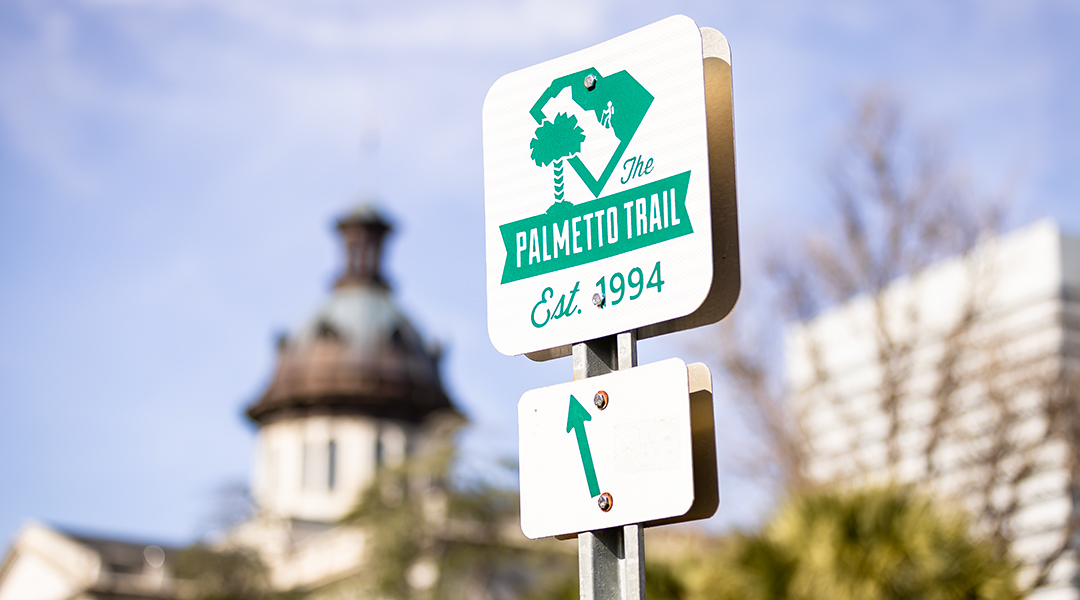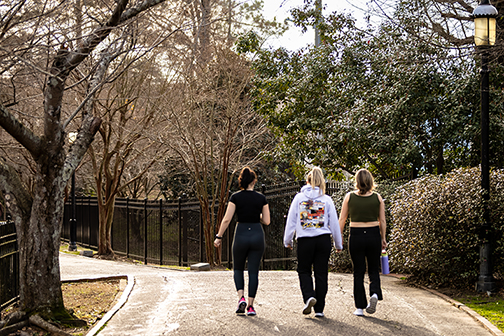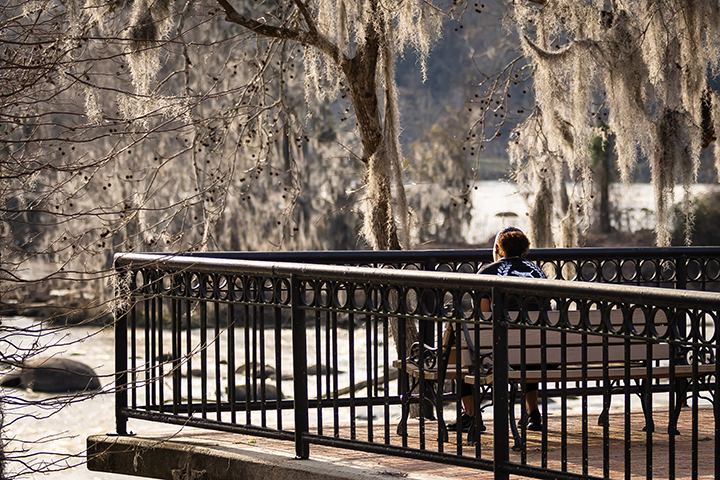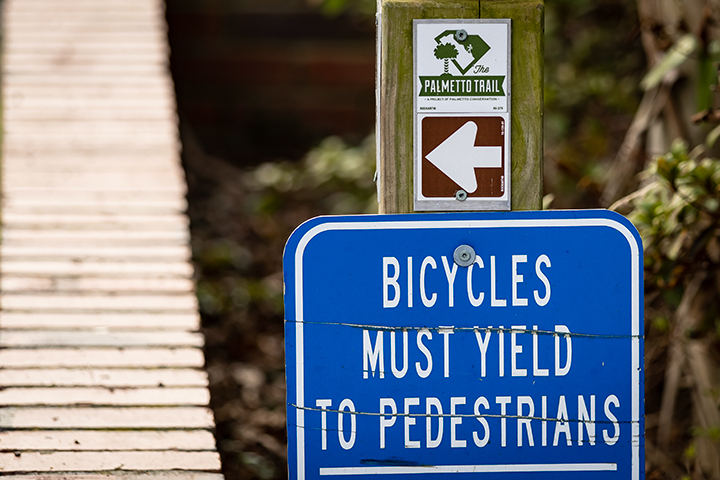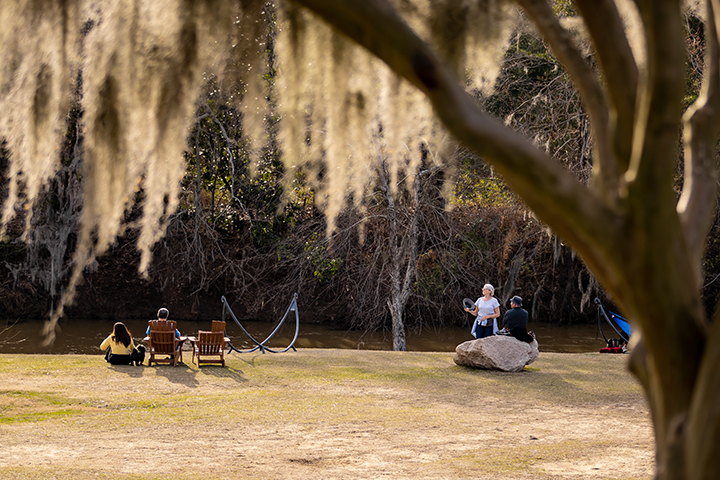The Capital City portion of the Palmetto Trail goes past landmarks such as the State House as well as through the woods. (Photos by Caroline Barry)
Columbia features a fairly urban and partially unfinished stretch of the Palmetto Trail, which spans the state from Walhalla to the ocean.
The walking, running and biking trail is set to expand from Leesburg Road south of Columbia to the Wateree River at the Sumter County line in the coming years.
Hikers take advantage of the wooded portions of the trail as a break from the city roads.
But safety is a major concern for trail-goers on the unfinished part of the trail, which is built and managed by the Palmetto Conservation Foundation.
About 380 miles of trail is already connected, and about 150 miles remains to be connected.
Much of the stretch from Leesburg to the Wateree puts hikers in harm’s way because of the proximity to passing traffic.
Sean Clayton of Lexington recently set the record for fastest time hiking the entire trail, finding his way on the unfinished parts. Clayton noted that the experience of hiking the trail in its entirety could be vastly improved by connecting the Capital City portion.
“Sometimes there’s no shoulder (of the road) at all,” Clayton said. “It’s either a drop off or maybe you have two feet of asphalt there that you can kind of fit on between you and the road. So not only will (finishing those portions) improve just like the hiking experience in general, but also just the safety of the hikers who are doing this.”
Clayton said he had close run-ins with cars on that portion of the trail.
Brian Ingram, who ran on the trail frequently in 2020, echoed this sentiment. He’s part of a running group that runs in long relay races and other distance events.
The safety issues make it difficult for the group to plan their runs and presents challenges for distance runners in particular, Ingram said.
“From a safety perspective, it’s hard to plan or run like that because you don’t want someone to be, you know, running literally on the side of the highway, where there’s a risk of getting hit by a car or if it gets dark,” Ingram said. “It’s a risk.”
While the city layout of Columbia requires some urban trails, Palmetto Conservation hopes to move trails away from the side of busy roads to avoid putting hikers and trail-users in danger, Executive Director Mary Roe said.
Palmetto Conservation recognizes the possibility and probability of having some urban trails on sidewalks, though, especially leaving Columbia to get to the trail’s Peak Passage.
“But definitely not on roads,” Roe said.
Through-hikers such as Clayton and runners such as Ingram should expect to see improved safety as well as overall trail improvements, Roe said.
“I think we’re going to see this particular trail be very popular,” she said.
The finished, wooded part of the trail draws hikers and runners of all ages and abilities.
But having safe green spaces in metropolitan areas is key for residents to get out in nature. Increasing the amount of the trail that is in the woods rather than along a road is exciting for the trail’s regulars, including Andy Richards.
Richards, who’s 77, is a regular on the Columbia portion of the trail. He runs when he is training for mountain races and is a strong proponent for running the wooded part.
“I just love running in the woods more than running on the streets,” Richards said. “Yeah, it just really frees your mind up. I get in the woods and start going down. I’m not fast. I’m slow because of my age. But I just enjoy getting in and going up and down the terrain and, you know, it just frees your mind up, totally.”

